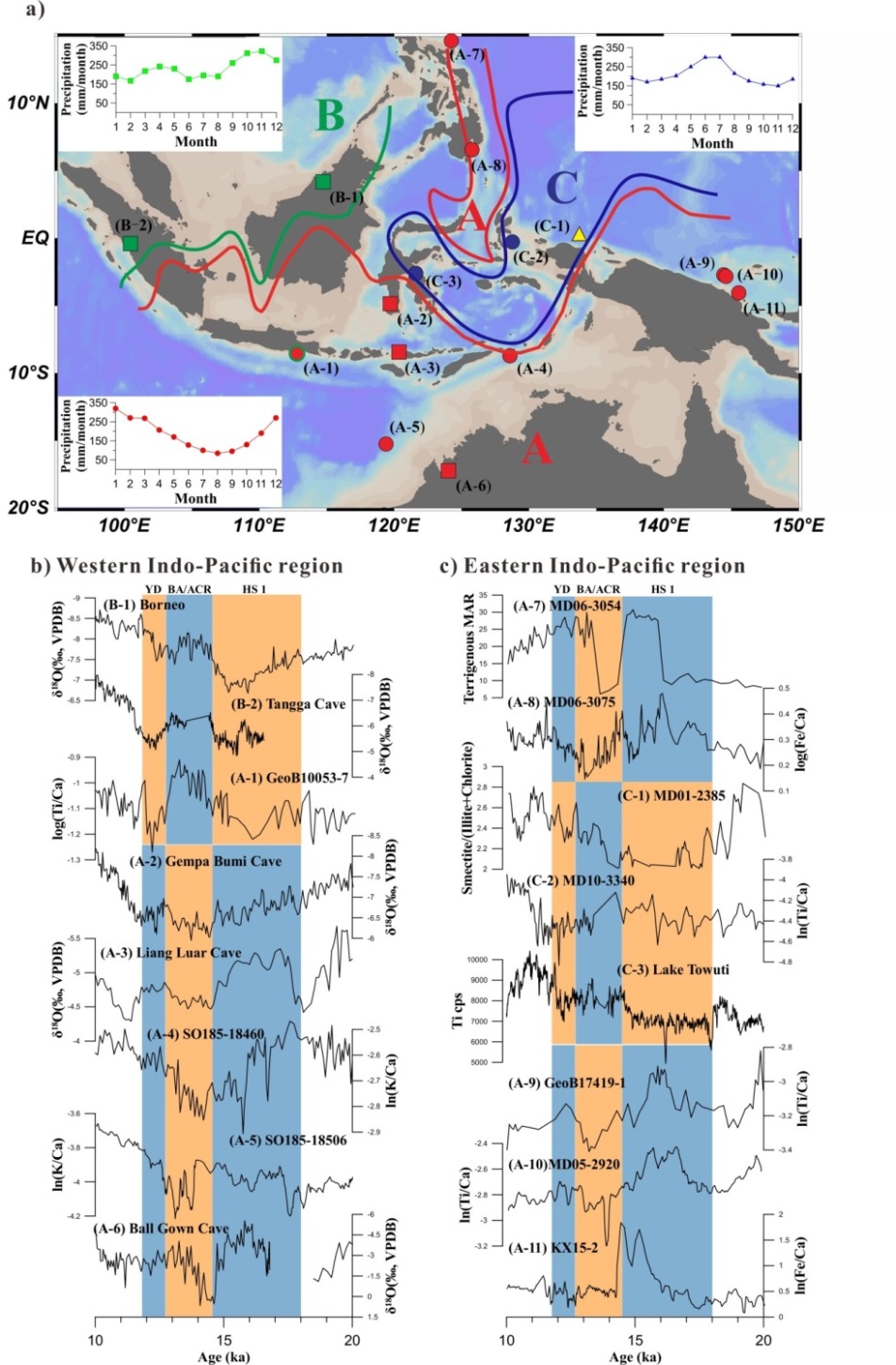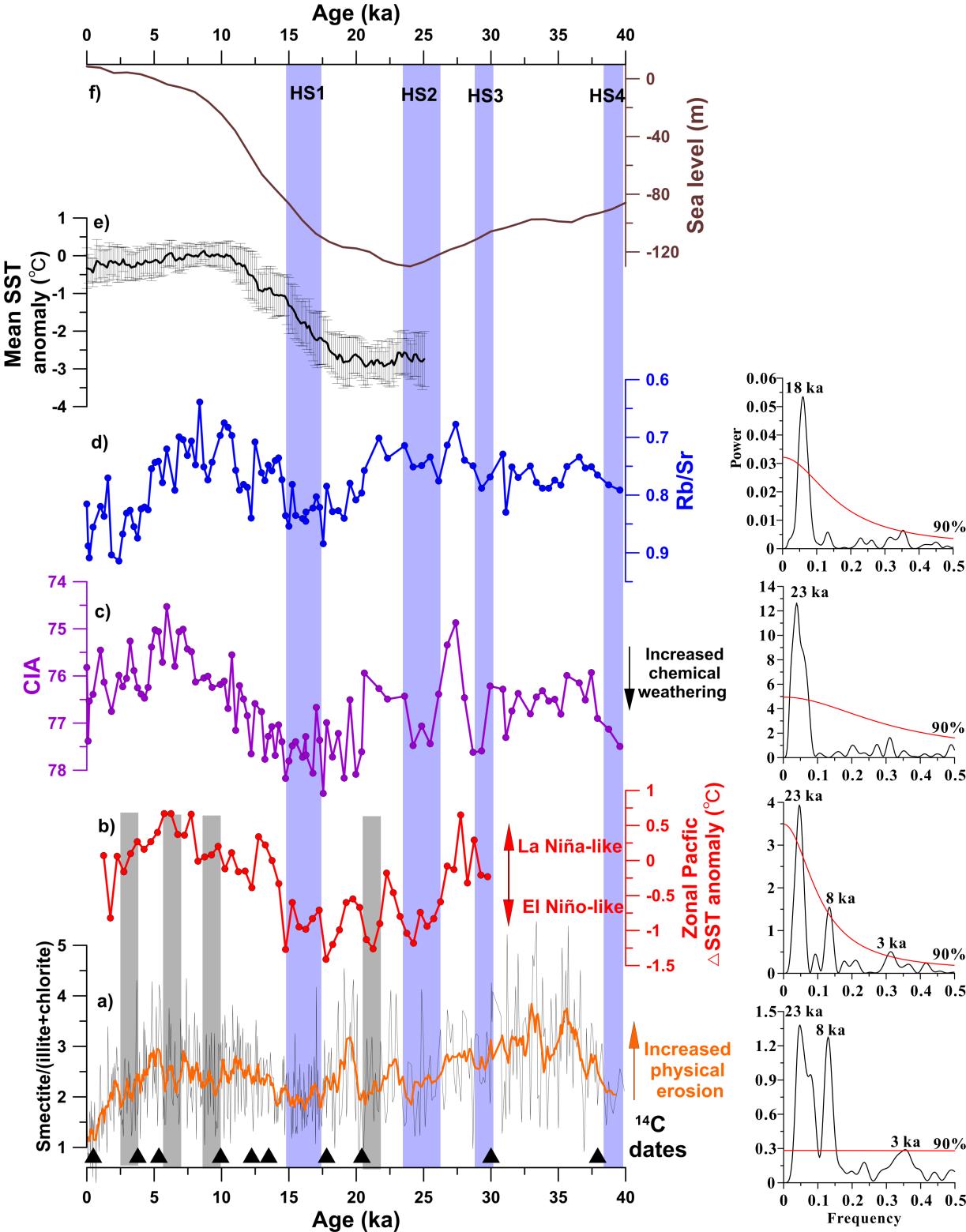The Indo-Pacific warm pool is the warmest ocean in the world and is known as the global "heat engine", playing an important role in the climate system. Future climate prediction in the Indo-Pacific Convergence requires not only a full understanding of the impact of human activities on climate, but also a clear understanding of the variability of natural climate factors, especially a fine picture of the potential feedback effects of natural climate factors after the superimposition of human activities. However, the actual observation records are generally short, which limits the understanding of climate evolution in the region in the context of global warming.
Based on the idea that developing independent proxies and reconstructing independent precipitation evolution histories with multi-indicator cross-validation can better reveal the response of tropical precipitation to regional ocean-atmosphere processes, the research team led by Prof. WAN Shiming from the Institute of Oceanology of the Chinese Academy of Sciences (IOCAS) reported a continuous weathering record spanning the past 40,000 years with a temporal resolution of 80 years for the first time, using deep-sea sediment cores from the warm pool core area.
The study was published in Geophysical Research Letters on Dec. 14.
The continental weathering record is mainly influenced by changes in precipitation and temperature, while no significant millennial time-scale fluctuations in temperature changes have been observed in the Indo-Pacific region since 40,000 years. Therefore, researchers concluded that the millennial time-scale fluctuations in the reconstructed weathering record are mainly controlled by local changes in precipitation intensity. In turn, the variation of precipitation intensity in the region is directly related to the intensity evolution of deep atmospheric convection in the Indo-Pacific warm pool.
The results also show that the evolution of atmospheric deep convection in the Indo-Pacific warm pool over 40,000 years is very consistent with the variation of the intensity of the El Nino Southern Oscillation (ENSO)-like system and the Pacific Walker Circulation.
On this basis, researchers further summarized the reconstructed precipitation records of the region by various indicators and found that the western side of the Indo-Pacific region (East Indian Ocean) is mainly affected by the migration of the Intertropical Convergence Zone (ITCZ) and has an inverse precipitation distribution on the millennial time scale, while the eastern side (West Pacific) has a "sandwich" precipitation structure, which is mainly controlled by ENSO-like system.
The above results are also well reproduced in the Transient Climate Evolution (TraCE)-21 model driven by the single factor of North Atlantic meltwater, suggesting that the North Atlantic meltwater drive may be the causal factor for the differential precipitation distribution in the Indo-Pacific region at millennial time scales.
"This study reveals the spatial and temporal distribution characteristics of precipitation in the Indo-Pacific region over the last 40,000 years, and finds the differential distribution characteristics of precipitation between its east and west sides, distinguishing the different impacts of ITCZ and ENSO systems in the region," said YU Zhaojie, first and corresponding author of the study.
"The results can provide a boundary framework and result validation for high-resolution precipitation and warm pool atmospheric deep convection models. Based on the inference of "wetter getting wetter" in the context of global warming, the differential distribution of local precipitation in the Indo-Pacific region is likely to intensify in the future," added Prof. WAN.
This work was supported by the National Natural Science Foundation of China, etc.

Fig. 1 Comparison of modern and deglacial precipitation patterns in the Indo-Pacific region. All records are plotted such that upwards indicates increased precipitation, and are presented on their original published age models. Blue/orange shading indicates higher/lower precipitation, respectively.

Fig. 2 Comparison of millennial-scale weathering and climate records. North Atlantic cold events of Heinrich Stadials (HS) 1-4 and other multi-millennial intervals are labelled and indicated with blue and gray bars, respectively. Spectral analysis of each record (a-d) is shown on the right, calculated using the PAST software. Red lines are 90% confidence levels.
Zhaojie Yu, Xiaojie Tang, Christophe Colin, David J. Wilson, Xinquan Zhou, Lina Song, Fengming Chang, Shuai Zhang, Franck Bassinot, Shiming Wan. (2022). Millennial-scale precipitation variability in the Indo-Pacific region over the last 40 kyr. Geophysical Research Letters.
(Text by YU Zhaojie)
Media Contact:
ZHANG Yiyi
Institute of Oceanology
E-mail: zhangyiyi@qdio.ac.cn
(Editor: ZHANG Yiyi)

